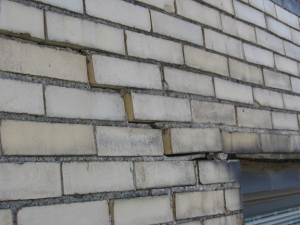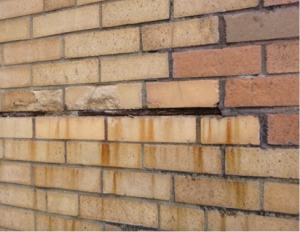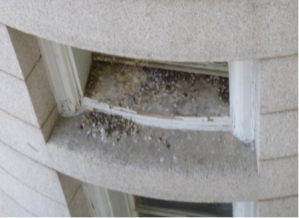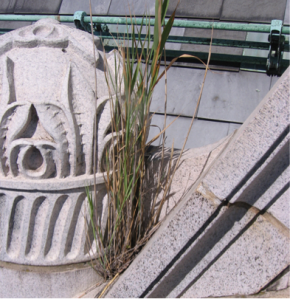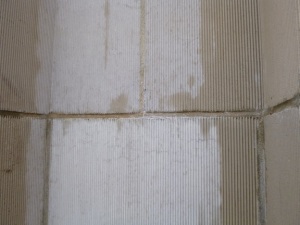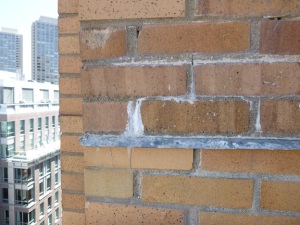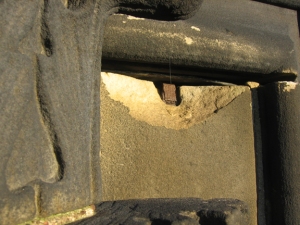Each week we’re bringing you an in-depth look at one of the standard conditions we encounter and document during inspections of buildings and civil structures.
Part 6: Failed Joints in Masonry
Failed masonry joints occur when the mortar or sealant material between masonry units or between a masonry unit and an adjacent material has broken down and is no longer providing a weathertight seal. Failed masonry joints occur in brick, stone, terra cotta, cast stone, and precast concrete. Failed sealant joints can also occur adjacent to areas of cast-in-place concrete.

missing mortar in brick masonry
Failed mortar occurs where mortar has cracked, eroded, or separated from the adjacent masonry units. When this deterioration process has continued for a long enough period of time, the result is missing mortar. Failed sealant occurs at joints between masonry and another material, such as wood or metal window assemblies, or at expansion joints. It is distinguished from caulked mortar joints and failed caulked mortar joints, where caulk has been applied as a repair material to an already-failing masonry joint.

failed mortar in cast stone masonry
Because mortar is sacrificial by design, all masonry joints are expected to fail eventually. A well-made masonry wall that is adequately protected from water infiltration should be expected to last 50 to 100 years before needing repointing, but some factors contribute to mortar joints deteriorating before their time.

caulked mortar joints in brick masonry
Poor design can be a cause, as when a too-narrow joint does not contain enough mortar to resist thermal expansion and freeze stresses. Lack of weatherproofing or failure to maintain copings and roofing elements leads to water infiltration, and joint failure along with other types of deterioration. Repointing with inappropriate mortar can cause failure of mortar joints and can severely damage the surrounding masonry units.
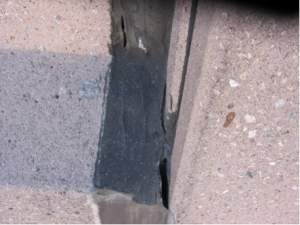
failed sealant at an expansion joint in precast concrete panels
The service life of sealants and caulk is much shorter than that of mortar; these materials deteriorate relatively quickly and must be replaced as part of regular building maintenance.
Next in this series: Atmospheric soiling and black crusts
Click here to see all posts in this series.
Click here for an index of all posts in this series, or download a pdf of the complete series.
